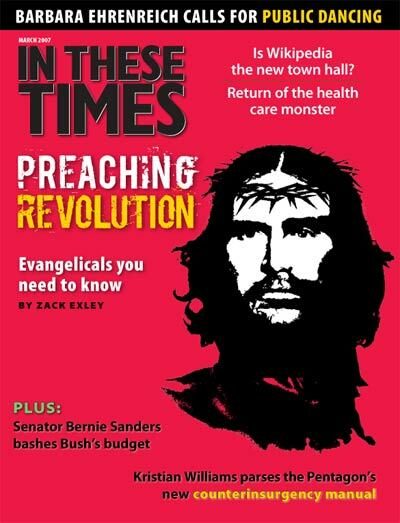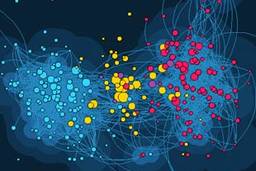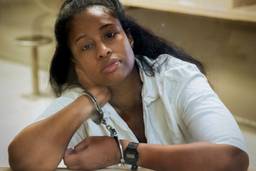
Cringing is often a sign of unfinished political business,” according to feminist author Jennifer Baumgardner.
She should know. Since 2002, Baumgardner has been spearheading the confessional “I had an abortion” campaign – most recently captured in the documentary film Speak Out: I Had an Abortion (www.speakoutfilms.com) – and in her new book, Look Both Ways: Bisexual Politics, she’s tackling a topic that makes both straights and gays wince: the explosion of young women experimenting with bisexuality.
“The label bi sounds bad,” writes Baumgardner, “because at least in some ways, bisexuals are an unliberated, invisible and disparaged social group.” And yet, she notes, according to Alfred Kinsey’s famous studies (and a more informal survey of Nerve.com personals), more than 30 percent of women have had or seek same-sex encounters. In the past decade, they have become nearly de rigueur on liberal arts campuses, inspiring the disparaging acronym “LUG” (Lesbian Until Graduation). Why?
Porn-inspired dorm fantasies aside, the rise in bisexual experimentation among young women, Baumgardner argues, is indicative of their desire for equality in romantic partnerships – and they bring these “gay expectations” back to their encounters with men. Not just lusting after “anything that moves,” as the stereotype goes, young women who “look both ways” are interested in romance, in being understood completely and treated as full people. Bisexuality, writes Baumgardner, is as much about “crazy, overwhelming, cue-the-orchestra love” as it is about “hot, messy, cue the Led-Zepplin-record sex.”
Many of Baumgardner’s theories are drawn from her own experiences, both as an openly bisexual woman and as a feminist writer who noted the rise of gay, lesbian, bisexual and transgender activism on college campuses while on previous book tours with writing partner Amy Richards. Though she shares the values of the larger “queer” culture, she eschews the term itself, noting that younger activists tend to use it, but she isn’t comfortable doing so. In Look Both Ways she tells her own story, and reexamines the stories of both contemporary and second-wave feminists who have had relationships with both women and men. For Baumgardner, life narratives are key to understanding and defining one’s bisexuality. She argues that a person’s sexual identity is formed from cumulative sexual experiences and attractions, rather than who is one’s partner at any given time.
“People who look both ways deserve to have a sexuality that originates in them, not one that’s a reflection of who they are currently sleeping with – a core of sexuality that is our own,” she writes.
As a lover of complex stories, Baumgardner cooks up quite a stew for the reader: a pinch of Freudian psychology; a dollop of passionately retold feminist history; a cupful of pop culture icons like Buffy, Ellen and Ani; and generous portions of personal anecdotes, including her own dalliances with Amy Ray of the Indigo Girls and her trouble achieving orgasms with male partners. The effect is a bit like a late-night grad-school gabfest: revealing, smart, titillating – and, yes, sometimes cringe-inducing. Along the way, she brings up topics that most feminists would rather let lie, such as her own internal prejudices she encountered in the relationship with her first girlfriend, Anastasia, whom she met while working at Ms.
“With Anastasia, the relating was very intimate,” she writes “but too similar, too familiar. There was almost a lack of respect on my part, a bit of misogyny. Anastasia was so delectable, but also, like Ms., a ghetto – too confining, over-populated, under-resourced, and undervalued – a margin that is expected to hold too much.”
Passages like these add depth to Look Both Ways, as they cut straight to the heart of many young women’s fraught relationship to both feminism and their own femininity. While Baumgardner acknowledges and honors the powerful role that feminism has played in the lives of generations of American women, she also recognizes that the movement has lost steam as women have gained more power. Like the second wave feminists who came before them, young women exploring their sexual identities are idealists – but they are less hampered by a rigid code of political conduct that forces them to forswear men entirely. Once-revolutionary women-only spaces like the Michigan Womyn’s Music Festival have become quaint and claustrophobic. Yet, individual women must still grapple with stereotypes and glass ceilings. Baumgardner deals with this tension by recasting feminism as both a crucial lesson and a phase, “a stage of development … like puberty.” She values the time she has spent in women-only spaces and relationships. However, she suggests that dwelling in a sense of oppression ultimately “fetishishes male power, making it larger than it is.”
While experimenting with same-sex relationships can reveal internalized prejudices for women, it also allows them to play with male roles – including sleeping with and even objectifying women – demystifying masculine power. Such freedom from traditional interaction patterns can be liberating and instructive. Baumgardner notes that feminism has too often downplayed the pleasure of personal sexual expression and display. She calls women’s reclamation of the objectifying gaze “defanging the babe.”
Baumgardner places Look Both Ways squarely in the feminist tradition by framing the struggle for civil and social rights as a historical progression. For her, fighting for bisexuals to be recognized and treated as equals in their own right is a feminist impulse, as it extends the battle for personal freedom to a still-maligned group. In her own life, Baumgardner notes, it accords with her desire for inclusion. She writes, “I don’t want there to be a space that I don’t have access to.” While this need has inspired her feminism, she notes, “it is the GLBT movement that is changing the world right now–as opposed to feminism, which is embedded in our culture and laws, and in many ways is much less visible.”
Perhaps it’s this currency, this political frisson, which makes bisexuality sexy to young women, along with its lingering whiff of taboo. But for how long? After all, according to Baumgardner, the end goal is not the endless production of ever-more-boutique political movements, but the serial dissolution of movements, allowing each of us to be socially recognized as “complex individuals.”
She suggests that such progress can be judged, in part, by the way that minorities are treated in popular media. Take the trajectory of gay television characters as an example – from the mincing queens and bull dykes of comedy to the courageous martyrs of the AIDS era, through a phase as “chic” mascots in the ’90s, to more recent roles as everyday characters with human foibles. Baumgardner offers the example of “Buffy the Vampire Slayer” as a parable. Just as this series ends with the birth of many slayers, freeing Buffy from the burden of individual heroism, she suggests, the acceptance of contested identities by the larger population frees activists from the burden of heroically embodying their race, class or sexual preference.
Baumgardner began her project just before gay pop culture became ubiquitous. “Queer Eye for the Straight Guy did not exist, nor did The L Word. … Ellen did not have a great new talk show that proved how popular she was despite being gay. Gavin Newsom hadn’t yet rushed gay marriage out of the land of theory and into the messy world,” she writes. She suggests that even current controversies about gay marriage have widened acceptance. “All of the news stories about gay marriage, for instance, make people who wouldn’t normally talk about gay people or rights talk about them. I have to believe that it leads to the next steps of liberation, the ones where gay people aren’t a cute cultural topic or a fad to exploit.”
Rejecting the pressure to be a “model” feminist or lesbian, Baumgardner counterintuitively champions the virtues of entitlement and the messiness of authentic personal discovery. Her discussion of the privileges of bisexuality is sure to raise the hackles of gay and feminist activists, but its one of the most interesting moments in the book. By looking both ways (both physically and metaphorically), bisexuals are able to pass as straight. Because of this, she argues, they expect and demand equality and acceptance to an extent that earlier generations of closeted gays and lesbians couldn’t. In this, they are much like the young women who embody feminist ideals while turning their backs on movement dogma.
“It’s the tragic part of being gay (or thereabouts) that I don’t want any part of, honestly,” writes Baumgardner. “It’s not so much that I am afraid of it. It’s more that tragedy is not the whole story and, like focusing on back-alley butchers to justify abortion rights, it’s over-told.”
Parodoxically, she suggests, the end result of so many young women looking both ways may be to allow gays, lesbians, bisexuals, transsexuals and everyone in between to develop “straight expectations” – the assumption that they will be seen and treated as fully human no matter who they sleep with.
Baumgardner says that she hopes her book will validate the experiences of young women, providing an opening for identification and quintessentially feminist consciousness-raising. While she is sometimes embarrassed by revealing the details of her life, she told me, “I think the shame is not OK, it’s going to hurt me.
“It’s my experience that if you’re bold enough to have the conversation, incredible things come out of it.”







